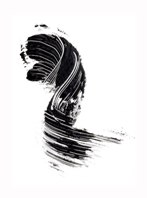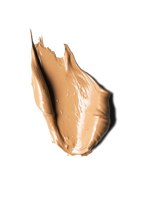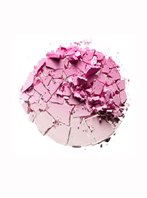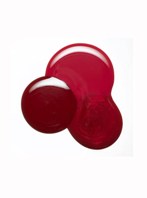We know how much you love that perfect pink lipstick. Or the eyeliner that's been sharpened down to no more than a nub. But there comes a point when you have to let go and accept the reality that your favorite beauty products eventually become breeding grounds for bacteria. Here's how to know what's still good and what's past its prime.
 |
| Photo by: Conde Nast Digital |
Mascara
This is the makeup item you should be most vigilant about: As the brush is taken out, applied, and put back in the tube, it brings with it any bacteria that has collected along the way, explains cosmetic chemist Jim Hammer. Lingering bacteria can cause redness and itchiness, or even conjunctivitis (a.k.a. pinkeye) and sties. Switchmascara every two to three months to be safe. "It will also have a distinct gasoline-like smell once it's gone bad," says makeup artist Pati Dubroff. If you develop any negative symptoms, immediately throw out any of your eye makeup that may have been contaminated. If your eyes are still irritated a day or two later, see an eye doctor.
Foundation
With the exception of powder formulas, all foundations are water-based, which means bacteria love them. Unopened, foundation can last for a couple of years, but once the seal is broken, Hammer says, it's best to replace it after 6 to 12 months. Keep foundations out of moist environments (such as your bathroom) and away from heat, as high temperatures encourage the growth of the bugs and can speed up the spoiling—true for beauty products in general. An off smell or a change in color tells you the formula is finished—applying it could cause irritation or breakouts.
 |
| Photo by: Conde Nast Digital |
Concealer
Concealers are meant to cover blemishes, not cause them—which is what can happen if you use a concealer that's too old. "You'll know it's gone bad because the color will start to shift," says cosmetic chemist Ni'Kita Wilson. Concealers in powder and stick form can last for up to two years, while liquids should be tossed after one.
Face Powder
Powders are the Energizer Bunny of makeup. They keep going...and going—at least, for up to two years. Still, as Wilson points out, "some powders contain small amounts of water from botanical extracts, so there's the risk of it growing bacteria if you leave it lying around your bathroom." Look on the ingredients panel for long Latin names—these are often botanicals, and their common names (such as oat extract, chamomile, aloe, bamboo, and green-tea extracts) are typically listed in parentheses.
 |
| Photo by: Conde Nast Digital |
Blush
The same rules that apply to face powder apply to powder blush, since neither contain water. Cream blush, however, should be replaced after a year. To prolong the life of any blush, Wilson advises cleaning your blush brush regularly and storing the color in a dark, dry place. "If your blush gets wet, you run the risk of promoting bacterial growth," says Wilson. Moisture can come in the form of residue from your foundation and face cream as well, explains Dubroff: "If you're applying blush over these products, the oils cling to the bristles and transfer to the blush." This will eventually cause a dull gray film to form on powder formulas, or a white, chalky layer on top of creams. To prevent this from happening, after applying foundation and moisturizer, wait a couple minutes before putting on blush. You can also blot excess oils from your face first, then, after your blush is on, immediately wipe off your brush with a dry towel. With powders or creams, texture is also an indicator—if the formula has become so hard it won't budge from the compact, it's time to buy a new one.
Eye Shadow
Eye-enhancing shadows? Yes, please. Eye-irritating ones? No, thanks. To keep your eyes from getting red or itchy, replace powdereye shadows after about three months, according to Hammer. Even though they are similar in formulation to other powders, because they're constantly in contact with a mucous membrane, there's a higher risk of transferring bacteria to the product and then back to the eyes. Pay extra attention to cream-based shadows, which tend to grow bacteria more quickly than powders. If you use your fingers to apply, wash your hands before doing so, and be aware of any color switches or off-putting smells.
 |
| Photo by: Conde Nast Digital |
Eyeliner
Liquid or pencil, these eye definers should be replaced about every three months. Like eye shadows, they are applied near a sensitive area and can pick up bacteria and bring it back to the eye very easily "without any visible signs of contamination," Hammer warns. If you've used a dingy liner, you could experience redness, itchiness, or, in extreme cases, conjunctivitis. Pencils will last a bit longer than liquid if you're steadfast about regular sharpening, but you'll know they're dead once a white film starts to develop on the tip that can't be sharpened off, says Dubroff.
Lipstick & Lip Gloss
The wrong lipstick color may spoil your mood—but the risk of the formula spoiling (or growing bacteria) is low since they don't contain any water, says Hammer. But since they're repeatedly exposed to the mouth area, he suggests replacing lip products after a year, or if you've recently been sick. Lipsticks and lip glosses contain oily ingredients that start to smell like stale cooking oil over time, according to Dubroff, who also says to look out for changes in texture. "You'll know a lipstick has gone bad when it gets hard and you can't spread the pigment on your lips; lip gloss will feel streaky and globby if you try to apply it."
 |
| Photo by: Conde Nast Digital |
Nail Polish
Nail polish may just be the Twinkie of the beauty world: It won't go bad from bacteria. Eventually though, lacquer will dry out and become thick and clumpy, with the pigments settling along the bottom of the bottle. Shake it, and if the formula remains separated, it's done-zo.
Makeup Brushes & Applicators
Grungy beauty may be back this fall—but that shouldn't include your makeup brushes. If cleaned and stored properly, good brushes can last for years, but when the bristles start to fray or fall out, it's time for a new set. To keep them looking pristine, Dubroff suggests wiping them on a dry paper towel or washcloth after every use, and giving them a thorough cleaning every two weeks with a gentle hair shampoo. The best way to store them is propped upright in a glass, where they can air out and won't be squashed and deformed. Cheap makeup sponges should be replaced after two uses—one side, then the other. (The exception: "high-quality ones that come with a cleanser, such as the Beauty Blender, which clean out well," Dubroff says.) Not only will old, porous sponges suck up too much makeup, but they are "little bacteria pits" if left sitting around, she explains.









0 comments:
Post a Comment